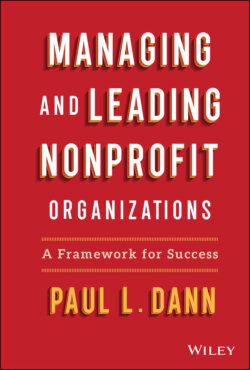Читать книгу Managing and Leading Nonprofit Organizations - Paul L. Dann - Страница 7
2 Leadership as Practice
ОглавлениеMalcolm Gladwell (2008) is credited with defining the amount of practice needed to master a desired skill. His observation that excellence in any endeavor requires 10,000 hours of practice is widely quoted and, while pundits argue about the veracity of the claim, we can agree that anything worth learning takes practice. While some people seem to have a natural ability for a given activity it is also true that people can be taught. This is true for leadership as well (Doh, 2003). Some people may have characteristics that support their ability to be an effective leader while others may find themselves with fewer innate abilities to support them at the onset. Despite these differences individuals have the capacity to build their leadership capability through thoughtful practice.
For example, I had a manager who was extremely introverted, and it pained her to speak with large groups. It literally took every bit of strength she had to talk within our group gatherings, never mind the stress that she experienced when presenting to a group at a formal conference. As a contrast, I had another manager who was quick‐witted and extremely comfortable presenting to groups and seemed to become more energized as the group size grew. A true extrovert! Now, the introvert had much more technical knowledge and had spent a great amount of time studying and learning the content that was to be presented. In contrast our extrovert's ability to work the crowd created a dynamic where there was not much concern about knowing the content. As you can see, in either instance there is a great deal to learn. The introvert needed to work on her capacity to present publicly by building strategies to handle her discomfort while the extrovert needed to learn the importance of being fully prepared. Given this it is important for every leader to actively pursue their own leadership development no matter what capabilities they bring at the onset.
The notion of actively pursuing your own leadership development means, in a practical sense, that you commit yourself to a path of continual leadership development, a path that ensures you build on your existing strengths and areas for improvement in an ongoing way. Commit yourself to pursuing ongoing learning about leadership and take what you are learning to build your leadership practice. If you do not learn and then practice, you will cut short your own development and stunt your growth as a nonprofit leader.
Leadership development is like muscle development. If you do not work out, then you will not build muscle mass. Conversely if you commit to working out, then you will build muscle mass. As an illustration of this, if you have ever broken a bone and had a cast, you will be familiar with the surreal feeling you had as you looked at your arm the moment the cast was removed. The muscle on the recently healed arm is essentially gone and the first thought you have is “Whose arm is this?” The arm still belongs to the original owner, it is just that the lack of exercise and mobility has caused muscle atrophy. In a like manner if you do not regularly exercise your leadership skills, you will experience the loss of leadership muscle.
In addition to working to develop your own leadership muscle it is important to consider strategies to build leadership capability at the team as well as organizational level. In today's complex nonprofit organizations, we come to recognize the importance of expanding the entire organization's leadership prowess. No longer can we rely on the individual positional leader to carry the team and the organization forward. We are better served if the entire team has the ability to act in a leadership capacity.
So, in a very real sense it is important to commit to thinking about your own, your team's, and your organization's capacity for leadership as a leadership practice that is built on what is known to work well in order to support the goals, objective, vision, and mission of your organization. The master carpenter that successfully learns the use of her tools engages in the practice of carpentry. She has learned and refined the various skills pertaining to each tool and knows from the knowledge base that has been developed what to use and when to use them. Then by plying her trade each day she continually refines her skills and capabilities. Your plan should be to grow into this metaphor from a leadership perspective and ensure that you as well as your entire team and your overall organization work to continually build a leadership practice.
As we explore some of the specific tools that you will want to develop, it's important to consider several perspectives about leadership practice that I have found to be extremely helpful. Each of the practice perspectives explored in this chapter provides a lens to help you better understand your work as a leader.
